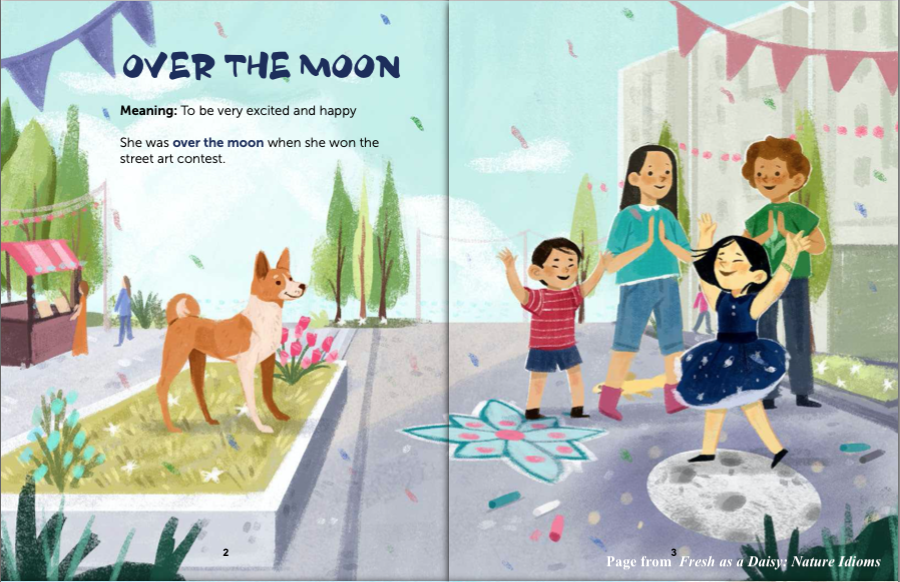
October is Celebrating the Bilingual Child Month! Whether your class is in-person or virtual this month, there are many ways to celebrate language learners in both settings. This is also a great opportunity to celebrate the parents who promote bilingualism at home, and increase parental involvement in school.
Here are 5 ways teachers can incorporate Celebrating the Bilingual Child Month into in-person and virtual learning activities like reading, music and art sessions, and even PE time. Share this information with families too – they will have lots of fun celebrating their language learners at home! And be sure to check out our inspiration handout for more ideas.
The Many Benefits of Being Bilingual
There are so many reasons why it’s great to speak more than one language in childhood. Science has found that bilingual kids enjoy cognitive, social, and emotional benefits. These advantages begin in infancy and continue throughout the school years into adulthood.
Processing words and thoughts in multiple languages leads to beneficial brain changes. These modifications promote neuroplasticity and enhanced “executive function,” which means a greater ability to focus and to switch between tasks.
1. Play a Game Using Bilingual Books
Even when we can’t travel from home, books allow us to travel in mind and spirit. Check out our post about playing games based on bilingual children’s books for a book-inspired scavenger hunt, charades, puppet show, and more!

Interested in a chance to win free bilingual books? Our 15th Anniversary Bilingual Book Giveaway is still going strong! (If you previously entered, you are automatically part of every drawing.)
The lucky winner chosen during Celebrating the Bilingual Child Month will receive a set of bilingual books in many languages and a copy of our popular teaching manual, Building Bridges with Bilingual Books and Multicultural Resources. (Books will be sent to US or Canada addresses only.)
2. Play a Game From Another Part of the World
Playing games is a great way to get kids moving and playing together. You can search online for games that are played in other parts of the world. (Physical games may need to be adapted to suit your school’s social distancing guidelines.) Here are a couple of our favorites.
1, 2, 3 DRAGON! (China)
This is an active family game where players form a line with each person’s hands on the shoulders of the person in front of them (like a conga line). The first in line is the Head, and the last person is the Tail. The Tail yells, “1, 2, 3, dragon!” and the Head starts moving to try and catch the Tail. The rest of the players must follow the Head’s movements exactly while trying to stay connected to one another. If the line disconnects, then the dragon has died. But if the Head catches the Tail, the Dragon survives! The person playing the Head moves to the back of the line and becomes the Tail, so everyone gets a chance to be the Head.
PALM BALL (Italy)
Similar to Dodge Ball in the US, you’ll need a ball and a piece of chalk to play this game. Mark off a big, chalk rectangle on the ground, with a line through the center. Each player stands in their side of the box. One player starts by serving the ball into the other person’s box, and that player must send the ball back by hitting it. You can’t hold the ball – you can only hit it back into the other person’s box. The challenge is to only let the ball bounce in your box once or twice before returning it to the other side.
3. Make Some Music

Music is a wonderful way to introduce kids to different cultures. Look up musical instruments from around the world, and use craft supplies to recreate them. They don’t have to be perfect replicas! It can be pretty amusing to try and craft unique instruments like a Korean haegeum, or an Indian taūs (which looks like a peacock) using what you have at hand. Kids will be learning about other cultures and making music in no time!
4. Explore New Cultural Cuisine
Different cultures around the world have their own favorite foods. Search online for a gazpacho recipe, and enjoy the classic cold soup of Spain and Portugal. Or, have the kids help make rolls of spam musubi, a popular snack in Hawaii. Filipino halo-halo would be so refreshing, or maybe you’re adventurous enough to try some durian fruit? It’s a fun (and delicious!) way to learn about another culture.
5. Work on Literacy Skills in a New Way
Want to help kids strengthen their literacy skills? Search online for virtual reading programs through schools, libraries, and other community organizations. Bilingual children, in particular, can significantly improve their literacy by reading bilingual books in both of their languages. You can also find interactive learning sets that make use of new tap-and-listen technology to make learning lots of fun.
Comment and tell us how you will be celebrating the awesome bilingual children in your life!


